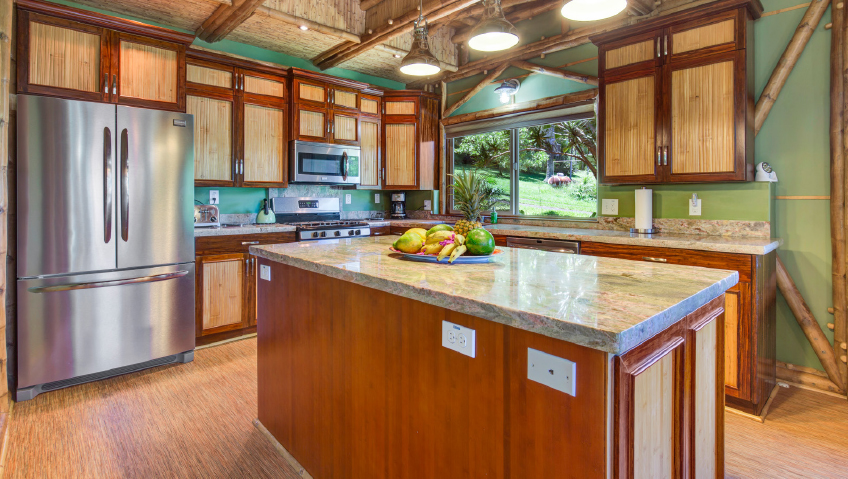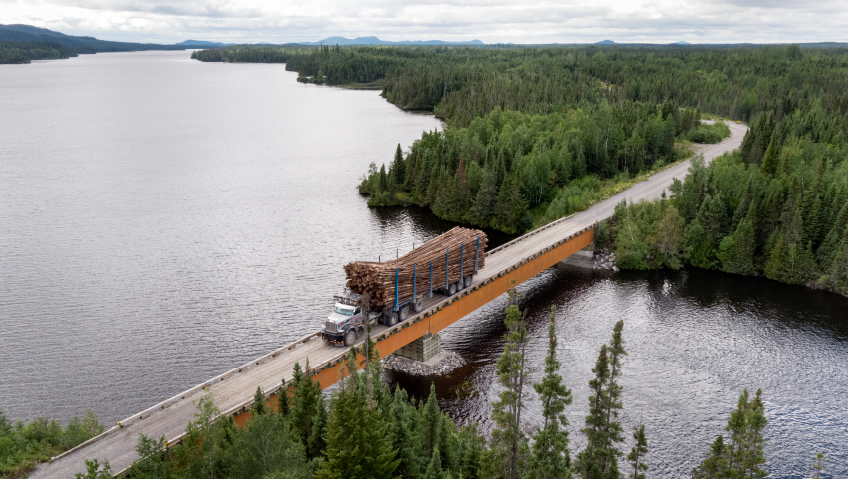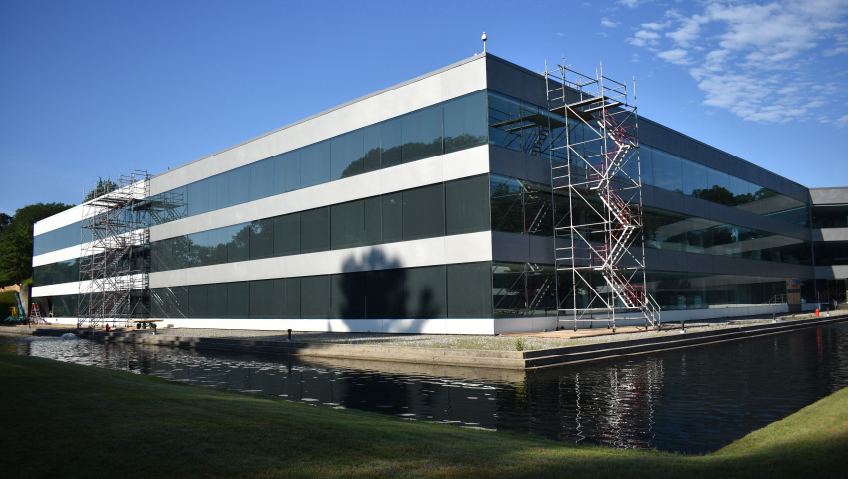When it comes to sustainability and the future of the planet, David Sands wears his heart on his sleeve. Passionate about the environment and believing there are better ways to build, the long-time architect has devoted his life and career to making the world a greener place.
After living in an ashram for eight years, Sands moved to the Island of Maui, where he was inspired to build a community house out of bamboo, the greenest building material. With help from his brother and friends, the labor of love was completed.
The success of this work soon led to the creation of Bamboo Living, the world’s leading creator of custom homes made with time-tested bamboo building materials with modern design and fabrication techniques. “I’ve been doing this since 1995,” says Sands, who started with round pole houses, “and I’m still doing this.”
Focus on climate change
To date, Sands and his team at Bamboo Living have been responsible for the design and construction of about 400 bamboo homes worldwide. The company’s scope of work includes residential properties, outdoor pavilions, schools, remote island resorts, sheds, garages, and more.
As the leader behind the world’s only internationally certified, permit-ready bamboo homes and building business, Sands takes pride in his work and wears multiple hats. He’s not only Bamboo Living’s co-founder / chief architect but is also the founder, chief design officer, and director of Rizome.
Founded a decade ago, Rizome—a name inspired by rhizome, the underground horizontal stem of certain plants producing roots and shoots that develop into new plants — is a leading supplier of sustainable bamboo panels, veneers, and laminated veneer and laminated strand lumber, and other products.
As calls for reducing carbon emissions increase worldwide, so does the demand for sustainable alternatives for everything from basic household items to construction materials. Long used to make chopsticks, bamboo is now a popular substitute for single-use plastic utensils like forks and knives (not accepted by many municipal recycling programs) because bamboo is lightweight, durable, and eco-friendly.
With its anti-bacterial properties, moisture resistance, and natural beauty, bamboo is finding its way into kitchens, bathrooms, living rooms, and bedrooms as decorative bowls, cleaning brushes, and bed linens.
One of the most widely used plants on earth, bamboo has many applications. Split and flattened culms (stalks) are made into flooring. Interwoven bamboo is used to make small and large items alike, such as hats, mats, and baskets; on a larger scale, it is used for rafts, bridges, scaffolding, and houses.
Today, bamboo ticks many boxes. As a building material, bamboo’s strength rivals that of wood and even concrete. It’s lightweight and durable, owing to its strong cellulose and lignin, which—although weaker than cellulose—together make for a perfect pairing.
Owing to its aesthetics and durability, bamboo is fast becoming a popular alternative to hardwood floorings such as oak, walnut, and mahogany. Hardwood trees can only be cut down once every 20 years; bamboo grows up to three feet per day and can be harvested yearly, making it far more sustainable.
The energy required to produce bamboo is about half of that needed for wood. And compared to steel, which must undergo multiple energy-consuming processes from smelting to casting and tempering before it is usable, the cost of bamboo production is far less.
Superior sustainability
Last year, Rhizome was selected as a finalist for the Carbon Removal XPRIZE Milestone Award.
According to a statement on the website of Climate Impact Partners, which is dedicated to delivering one billion tons of CO2 reductions by 2030, “The Musk Foundation has chosen the proposed expansion of the Rizome Bamboo Project in the Philippines as one of the top 60 global solutions for carbon removal.” The $50 million Grand Prize will be announced on Earth Day 2025.
This recognition is in line with Climate Impact Partners and its leading role in carbon finance for projects transforming the world’s economy, along with improving health, and livelihoods and restoring the Earth.
“Our mission setting up Rizome was to develop bamboo into a primary global construction material, and sequester gigatons of CO2 in the process,” says Sands, who hopes to see up to 10 percent of global emissions being addressed by bamboo plants, bamboo building materials, and the avoidance of emissions by reducing the use of wood, steel, and concrete. “It’s quite an achievable goal—you just have to keep taking the next steps.”
To ensure bamboo harvesting is ethical and sustainable, Rizome lives by its tagline, “Don’t cut the trees, cut the grass.” And since bamboo (which encompasses over 115 genera and 1,400 species) is actually a giant grass, cutting it when harvested stimulates growth. Unlike trees that are cut down and don’t regenerate, bamboo plants can live up to 120 years, making bamboo farming a multi-generational income stream for farmers.
Rizome only harvests mature poles that are three to five years old for its products. Each plant puts out five to ten new poles per year, and Rizome is seeing outstanding success with higher numbers.
Although bamboo will reach pole heights of 60 to 100 feet in just a few months, they must be at least three to five years old to be structurally mature and aren’t harvested if they are less than five inches (12.7 cm) in diameter. When poles come into the factory for processing, they weigh about 220 pounds (99.7 kg) each, with the branches and upper section already removed.
By using bamboo, Sands says the company is working toward reducing global emissions by 10 percent through rapid, replicable growth. “Today, we’re cultivating giant bamboo in subtropical Florida and the Philippines and building the world’s most reliable bamboo supply chain,” says the company on its website. “Because now, more than ever, the world needs the wonders of bamboo.”
Growing up in Florida, Sands is intimately familiar with the state and its crops and growing conditions. Although known worldwide for its citrus industry, the approximate 900,000 acres once dedicated to citrus has dropped to some 400,000 acres because of invasive disease.
Florida’s farmers are looking at alternative crops, among them bamboo. Working with an agricultural partner, Rizome is conducting tests in the state and looking to scale up in South Florida for its engineered bamboo material.
“We are planting in Florida, and we are working on the funding for the production facility there,” he says. “I hope that we will be up and running there by the end of the year. That line is going to get added this summer in the Philippines.”
Some products include laminated building materials, with expansion to strand-woven. A crushed, densified bamboo product used in some bamboo flooring, strand-woven can be used for siding or outdoor decking.
The future of bamboo
Much of Bamboo Living and Rizome’s business comes through its website, word-of-mouth referrals, and its company’s presence in exhibitions like the recent Art Fair Philippines.
Held in February, the event was attended by more than 30,000 people including top architects, and was picked up by CNN Philippines. It was the company’s first appearance at the Fair, which saw architect Andy Locsin using the company’s bamboo materials in his design. “It was really neat—flowing and very fluid,” says Sands. “The panels we made could be curved, and ended up being beautiful.”
Experiencing increasing demand for bamboo, Sands says Rizome—which is looking for investment—is scaling up its business to meet customer needs.
“We thought it was going to be all export because we have clients in the United States that are interested in the material,” he says, “but the demand has been so strong here in the Philippines that we’ve got to significantly expand our production capacity to have enough material to export.
“And Bamboo Living is as busy as it’s ever been. We’ve got about 100 projects in the queue, so we’re expanding production there as well. “Our favorite project is always the next one,” he says.
In May, Sands will conduct part of a presentation with renowned construction engineering company Skidmore, Owings & Merrill (SOM) at the National Structures Conference, discussing the need for more sustainable materials in building. “Wood, steel, and concrete are responsible for about 25 percent of global emissions, so we need to get that addressed, and bamboo is an incredible tool.”






